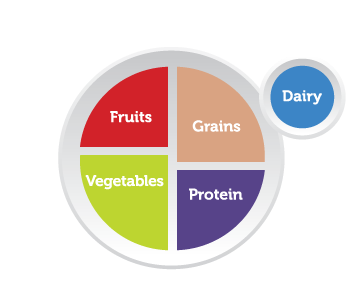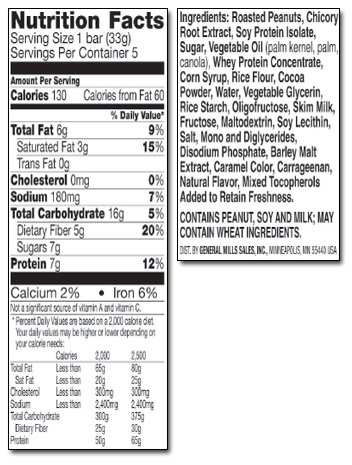Grocery Store Tour
Macronutrient Overview
-
Carbohydrates (CHO) 4 Cal per 1 gram
- Used to maintain blood glucose levels which supports the creation of ATP (adenosine triphosphate)
- Preferred energy source as opposed to protein catabolism
- Daily targets: 45 to 65% of our daily caloric expenditures
- Sources: Vegetables, fruits, whole grains
- Good carb source has a sugar-to-fiber ratio <= 2.0
-
Proteins (PRO) 4 Cal per 1 gram
- Muscle repair and protein catabolism and anabolism
- Daily targets: 10 to 35% of our daily caloric expenditures
- Sources: Lean meats, dairy products, fish, eggs
- Lean protein source has protein-to-fat ratio <=2.0
-
Fats (FAT) 9 Cal per 1 gram
- Provides energy and supports many bodily functions.
- Daily targets: 20 to 35% of our daily caloric expenditures
- Sources: Oils, butter

Department Hints
| Department: | Overview |
| Produce | Look for a wide variety of color. Fresh, frozen canned (low sodium) and dried can be equally good for you. |
| Breads | Understand the sugar to fiber ratio of the bread. Lower the better. |
| Meats | There is no perfect meat. Make sure fat is half as much as protein. Target 93% or higher for lean ground meat. |
| Juice | Avoid at all cost, however if you must dilute with water. |
| Yogurt | Buy nonfat Greek yogurt and add your own sugar and fruits. |
Reading a Food's Nutritional Label

Step 1 - What is the macronutrient your food choice is attempting to accomplish?
For example, the food label to the left demonstrates that this food choice is a carb source as it is the leading macronutrient value on the label.
STEP 2 - Evaluate the macronutrient you are attempting to get from this food choice.
If your food choice is a protein source, make sure the fat content is half the amount of protein.
If your food choice is a carb source, make sure the sugar content is relatively close to the fiber content.
Based on this food label being a carb source, we immediately look at the fiber number and see how close the sugar is to it. Not bad!
STEP 3 - Determine how the macronutrient distribution stacks up with your target distribution. Here is a quick way to calculate this. (See the food label) Start with the carb number (16g). Divide the carb number by 2 to get your protein target (16/2=8). Evaluate the protein number (7g) against the target number (8g). Then take the protein target and divide by 2 to get the fat target (8/2=4). Evaluate the fat number (6g) against the target number (4g) . Not terrible. Based on this, we would suspect this snack to be a relatively good choice, especially when we consider the sugar-to-fiber ratio.
Helpful Values and Hints
4 grams of sugar = 1 tsp of sugar
1 gram of carb is 4 calories
1 gram of protein is 4 calories
1 gram of fat is 9 calories
2300 mg of salt = 1 tsp of salt
Fats should be half the protein amount
Proteins should be half the carb amount
Fiber should be half the protein amount
Avoid all artificial sweeteners
